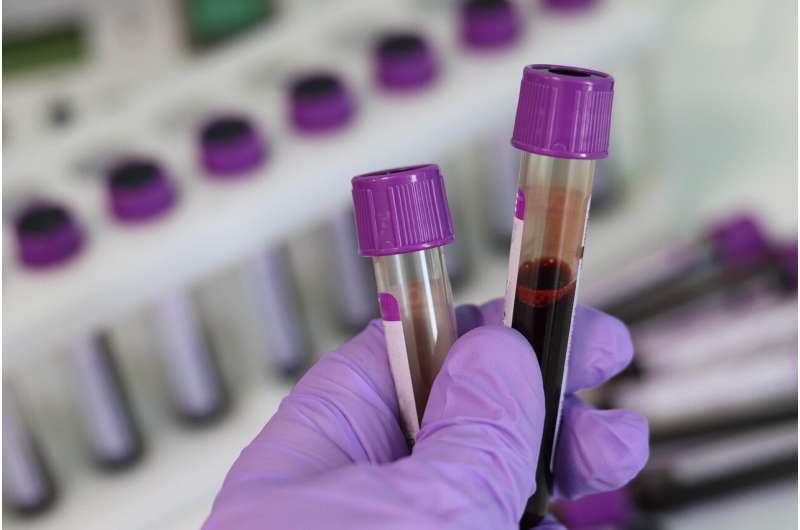This article has been reviewed according to Science X's editorial process and policies. Editors have highlighted the following attributes while ensuring the content's credibility:
fact-checked
peer-reviewed publication
trusted source
proofread
Algorithm to calculate LDL or 'bad' cholesterol outperforms other equations, study shows

In a new large, comprehensive analysis that looked at data from more than 5 million patients, the Martin/Hopkins method developed by Johns Hopkins researchers to calculate low-density lipoprotein (LDL) cholesterol—so-called bad cholesterol—produces higher accuracy rates than the nearly two dozen other available equations.
The findings, published June 19 in Global Heart, reveal that overall, the Martin/Hopkins algorithm correctly classified 89.6% of patients' LDL cholesterol values, followed by the Sampson method (which was proposed by the National Institutes of Health), which correctly classified 86.3%. The previous gold standard of testing LDL cholesterol levels, the Friedewald method, correctly classified 83.2% of patients. An even larger advantage of the Martin/Hopkins algorithm was seen over other methods for patients with characteristics such low cholesterol and high triglyceride levels.
For the study, researchers looked at data from October 2015 to June 2019, using the Very Large Database of Lipids—a cohort made up of 5,051,467 adult and pediatric patients. The average age was 56, and 53.3% were women. Analyzing 23 identified LDL cholesterol equations, the researchers found that following the Martin/Hopkins equation, those with the most accurate findings were Sampson, Chen (84.4%), Puavilai (84.1%), Delong (83.3%) and Friedewald. The other 17 equations were less accurate than Friedewald, with accuracy as low as 35.1%.
Assessing LDL cholesterol is important for understanding the risk of stroke and heart disease, which is the #1 cause of death globally. High levels of LDL cholesterol are associated with buildup of plaque in the arteries that can narrow the blood vessels and restrict blood flow to the heart and the brain, which can lead to heart attack and stroke. By monitoring LDL cholesterol levels, clinicians can identify patients at higher risk and take measures to manage and reduce risk, such as recommending lifestyle changes or prescribing medications like statins and an increasing set of nonstatin medications.
"The biggest concern is that underestimating LDL cholesterol could lead to withholding treatments that would be beneficial for patients," says Seth Martin, M.D., M.H.S., senior study author a professor of medicine at the Johns Hopkins University School of Medicine and director of the advanced lipid disorders program at the Ciccarone Center for the Prevention of Cardiovascular Disease.
Martin, along with his colleagues, created the Martin/Hopkins method in 2013. It has since been recommended by the American College of Cardiology and the American Heart Association, and it is used by several diagnostic laboratories in the United States and around the world. Before Martin/Hopkins was developed, the Friedewald equation was the most commonly used method to gauge LDL cholesterol. However, Martin says that method and others that followed underestimate LDL cholesterol and cardiovascular disease danger for people for whom accuracy matters most: those at high risk.
"Underestimating LDL cholesterol falsely reassures patients that their LDL cholesterol level is fine when in reality it isn't," says Martin. "It's higher than the lab is reporting and warrants clinical action."
The study also revealed the Martin/Hopkins algorithm to be the most accurate across multiple patient subgroups based on age, sex, triglyceride (fat in the bloodstream) levels and fasting status, as well as patients with atherosclerotic cardiovascular disease, diabetes, hypertension, inflammation, thyroid dysfunction and kidney disease.
"Most proposed alternatives to the Friedewald equation worsen LDL cholesterol accuracy, and their use could introduce unintended disparities in clinical care," says Martin. "We hope labs that are still using the Friedewald method take a look at our findings and see that it's time to progress to an LDL cholesterol calculation that better serves patients in guiding lipid treatment to prevent heart disease and strokes."
Johns Hopkins Medicine has made the Martin/Hopkins method publicly available, and any lab can use it for free. It can be accessed at LDLcalculator.com.
More information: Christeen Samuel et al, Accuracy of 23 Equations for Estimating LDL Cholesterol in a Clinical Laboratory Database of 5,051,467 Patients, Global Heart (2023). DOI: 10.5334/gh.1214




















